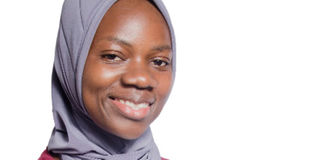Access to affordable, equitable healthcare key to achieving SDGs

Following the recent commemoration of the International Women’s Day, it appears appropriate to examine whether Uganda’s health financing system promotes equity and a gender balanced environment as a discourse on universal health coverage (UHC).
UHC, which literally refers to the ability of all individuals to meet their health-related costs without financial hardship, is a key tenet of realisation of the right to health. The difference in gender carries with it different risk factors and burdens across the life cycle. This becomes particularly critical for women and girls who bear a disproportionate burden of disease and illness compared to their male counterparts.
Women in Uganda face risks of early death related to pregnancy either during delivery or due to unsafe abortion as they attempt to terminate pregnancies. Other health risks include, those related to sexual and gender-based violence. There is also the hidden burden of disease in form of non-communicable diseases such as cancer and hypertension. This, therefore, means that for women living in poverty, the presence or absence of UHC programmes becomes one of the critical buffers between being plunged into absolute poverty or even death.
In this era of the Sustainable Development Goals, Goal 3, target 3.8 enunciates that for states to achieve good health and well-being for all, access to effective, quality and affordable essential medicines is essential to ensure that state are “leaving no one behind”.
Martin Luther King Jr once said: “Of all forms of inequality, injustice in healthcare is the most shocking and inhumane”. The extract emphasises the significance of equitable health financing systems, especially for the most vulnerable and marginalised groups in society. Although Uganda has made remarkable progress in reducing poverty, about eight million (21.4 per cent) of the population lives below the national poverty line.
This is in part due to; the economy remains predominately peasantry with a significant proportion of the population, approximately 40 per cent, engaged in subsistence farming, according to a 2017 International Monetary Fund report. Such harrowing figures mean that poverty, health and gender are indivisible, and there is need to balance the three dimensions.
Every day, hundreds and thousands of women fall into poverty because of exorbitant healthcare fees. According to the World Bank country assessment report of 2016, sections of Uganda’s population classified as most vulnerable include women, widows, single mothers, elderly and people with disabilities.
Realising equitable health financing requires placing women, and other marginalised populations, at the centre of development discourse-poverty, gender and sexual reproductive health rights. An understanding of the links between these issues, while applying a human rights-based approach to development as the foundation could lead to appropriate interventions on all fronts of social, economic, wellbeing and sustainable development.
In addition, addressing issues related to poverty, as an underlying determinant of health, can make a positive difference. Therefore, the solution to achieving access to equitable healthcare is not only in setting up sophisticated state-of-the-art healthcare facilities, but rather, tackling the underlying determinants of health, including poverty and gender equality, among others.
Moving forward, equitable health financing has the potential to address health inequalities and improve women’s health outcomes. However, this is only attainable if special attention is given to that factors that perpetuate the risk factors for ill health amongst women across their life cycle.
This calls for more prioritisation of public financing from the central government and development partners, policy action, and strategic investment focused on advancing access to quality and affordable healthcare.
The writer is a human rights lawyer [email protected]
Mr Mao returns next week




